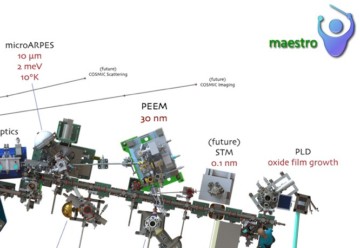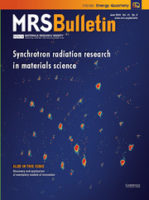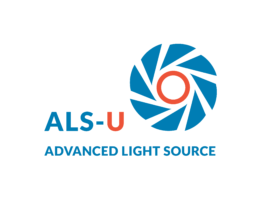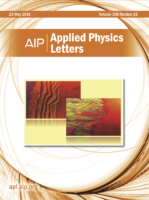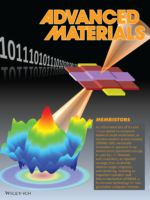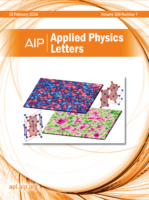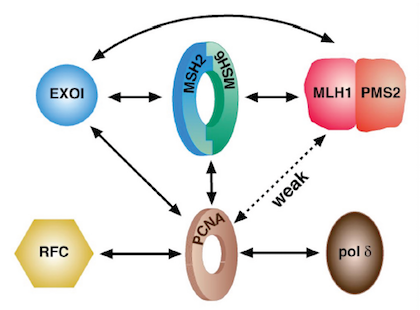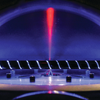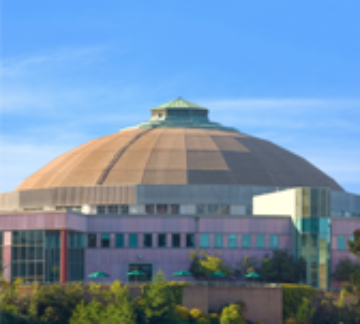This September, Beamline 7.0.2, MAESTRO, will accept general user proposals for the first time. Its unique attributes combine strong sample preparation capabilities with cutting-edge spectromicroscopy tools, offering researchers unparalleled opportunities for studying the correlation between structure and electronic properties. Read more »
Quantitative Microstructural Imaging by Scanning Laue X-ray Micro- and Nanodiffraction
Synchrotron Laue x-ray microdiffraction turns 20 this year. The June 2016 issue of MRS Bulletin is dedicated to synchrotron radiation research in materials science and features a review article on the current capabilities, latest technical developments, and emerging applications of Laue x-ray micro- and nanodiffraction co-authored by ALS beamline scientist Nobumichi Tamura. The cover image shows a Laue x-ray microdiffraction pattern from a sea urchin tooth taken on Beamline 12.3.2. Read more »
BESAC Announces Results of Facility Prioritization Upgrade
On Thursday, June 9, DOE’s Basic Energy Sciences Advisory Committee (BESAC) released the recommendations of the BES Facility Upgrade Prioritization Subcommittee. I’m pleased to announce that the subcommittee considers ALS-U “absolutely central” to contribute to world leading science and “ready to initiate construction”–the highest possible ratings. Read more »
ALS-U Update: BESAC Announces Results of Facility Upgrade Prioritization
On Thursday, June 9, DOE’s Basic Energy Sciences Advisory Committee (BESAC) released the recommendations of the BES Facility Upgrade Prioritization Subcommittee. I’m pleased to announce that the subcommittee considers ALS-U “absolutely central” to contribute to world leading science and “ready to initiate construction”–the highest possible ratings. Read more »
In-situ Characterization of Highly Reversible Phase Transformation by Synchrotron X-ray Laue Microdiffraction
In situ measurement of the orientation matrices for the austenite and martensite phases of the alloy Cu25Au30Zn45 across the interface was performed by synchrotron x-ray Laue microdiffraction at the ALS. Together with theoretical calculations, researchers verified directly and quantitatively the factors that contribute to the alloy’s elastically compatible interface, which ultimately leads to the ultralow fatigue property of phase transformation in martensitic materials. The approach can be generalized to characterize the evolution of microstructure when the transport properties are sensitive to the structural compatibility at the heterogenous phase boundaries. Read more »
Direct Observation of Localized Radial Oxygen Migration in Functioning Tantalum Oxide Memristors
As information bits of 0s and 1s are stored in crosspoint tantalum oxide memristors, or resistive random access memory (RRAM) cells, nanoscale-resolution in operando x-ray transmission spectromicroscopy is used to directly observe oxygen migration and clustering, revealing an important operation and failure mechanism of RRAM, a frontrunner technology for next-generation computer memory. Read more »
The Phase Transition in VO2 Probed Using X-ray, Visible and Infrared Radiations
The nearly simultaneous Mott (electronic) and Peierls (structural) transitions in vanadium dioxide are of significant scientific interest and have tremendous technological promise in computing, memory, optics, and micromechanics. The cover features nanoscale-resolution maps of the Mott and Peierls transitions imaged simultaneously by Kumar et al. using state-of-the-art in situ STXM at the ALS. Read more »
SIBYLS Beamline Builds on Nobel Research
Often the full impact of a scientific discovery takes decades to realize, during which the research is developed further and adopted by other scientists. Such was the case for the work of biochemist Paul Modrich, one of three recipients of this year’s Nobel Prize in Chemistry. Berkeley Lab’s Advanced Light Source was a core resource Modrich used to build on his earlier work. Read more »
ALSNews Vol. 365
ALSNews Monthly Newsletter of the Advanced Light Source, Lawrence Berkeley National Laboratory Tracking the Elusive QOOH Radical For the first time, researchers directly observed QOOH molecules, a class of highly reactive molecules at the center of the web of ignition chemistry reactions. The data generated will improve the fidelity of combustion models used to createRead More Read more »
Notification of General User Proposal and Approved Program Results
The Proposal Study Panel (PSP) met April 23–24 to oversee and finalize the scoring of General User Proposals for the 2015-2 operating cycle, and to make recommendations to the ALS Scientific Advisory Committee (SAC) on Approved Program applications. Allocation meetings for each beamline will take place in May. Read more »
- « Previous Page
- 1
- …
- 14
- 15
- 16
- 17
- 18
- …
- 20
- Next Page »
